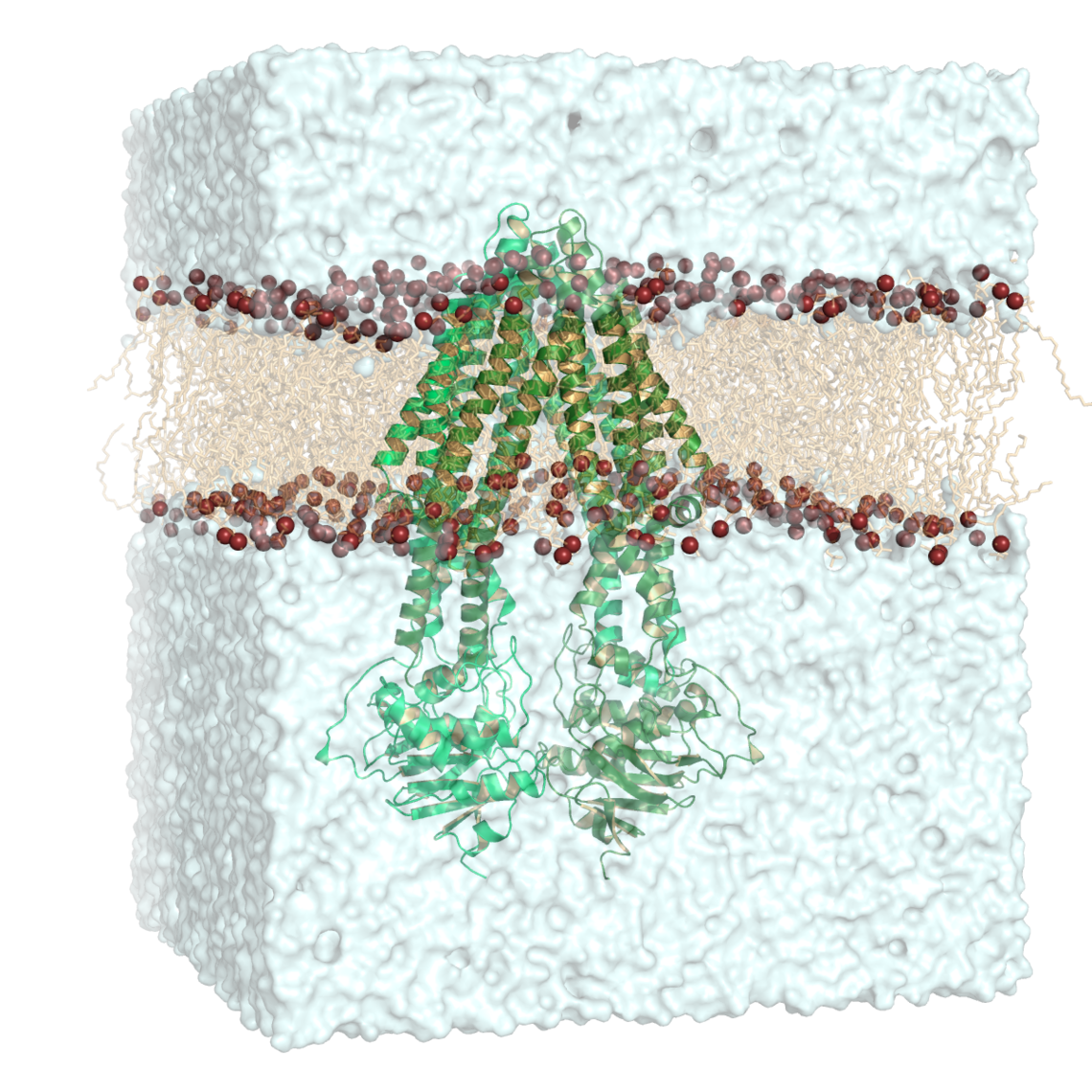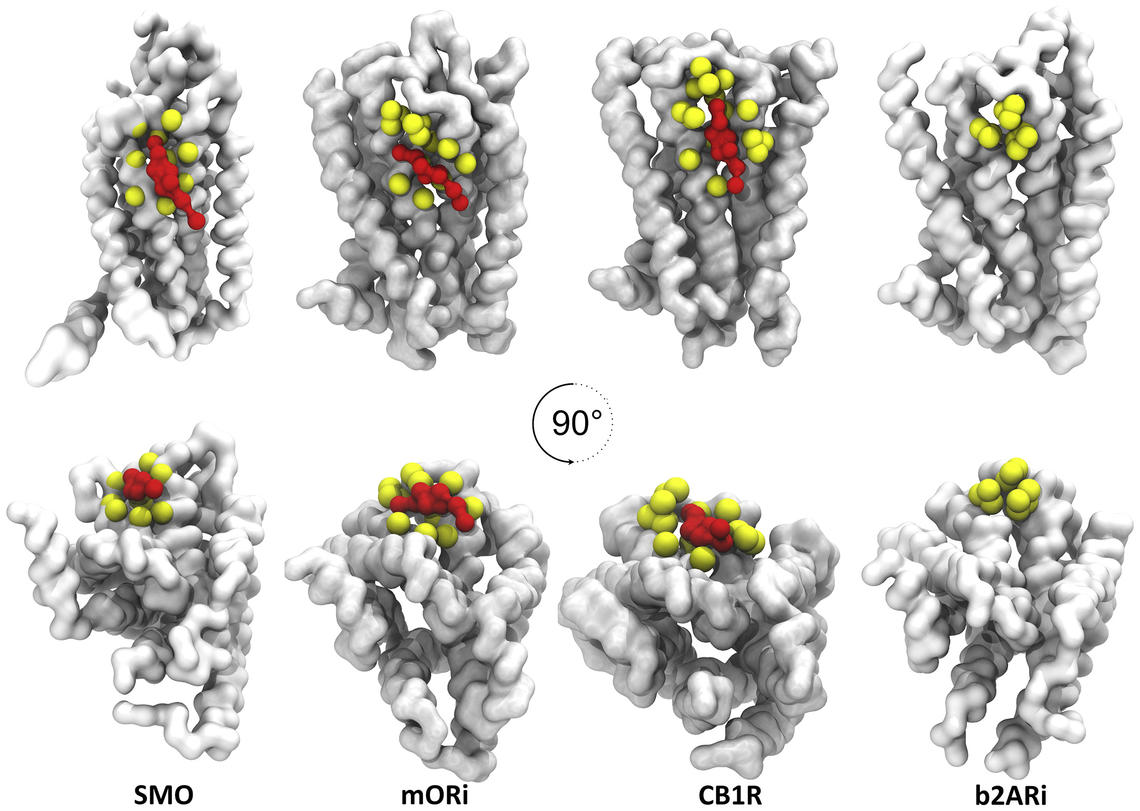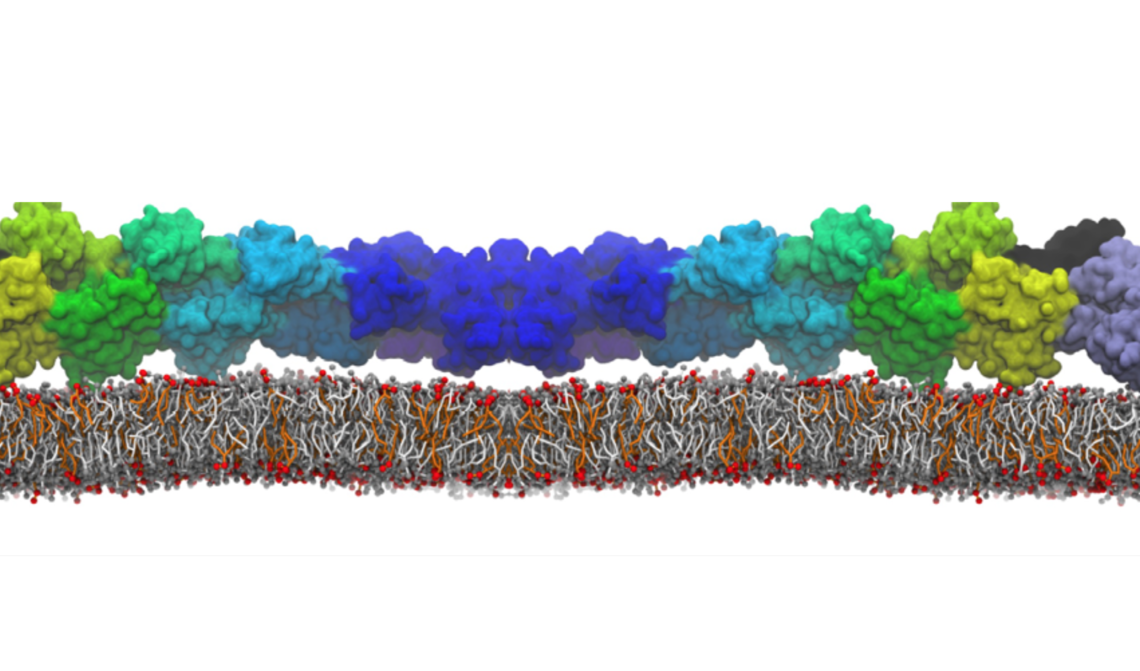Research Areas
Using computer simulations to study biological problems
Membrane Proteins
Some text about Membrane proteins by Peter
ABC transporters
And say something about the coolest membrane proteins
GPCR
And add maybe some of the most recent results from Besian
Ion channels
Maybe something from Haydee?

Lipid-protein interactions
Cells are surrounded by membranes, thin sheets made up of two layers of molecules that separate the inside from the cell from its environment. These molecules, lipids, have water-loving headgroups and oily tails so that the membrane has an oil-like interior. Biological membranes contain a vast variety of proteins that are responsible for contact between the cell and the outside world: they transmit signals, transport nutrients, and other molecules, and maintain the right conditions for the cell. Lipids also play an important role in these processes

Membrane Biophysics
Physical principles governing biological membranes.

Peter will write something about the study of the cell membrane, its properties and functions.
Cells are surrounded by membranes, thin sheets made up of two layers of molecules that separate the inside from the cell from its environment. These molecules, lipids, have water-loving headgroups and oily tails so that the membrane has an oil-like interior. Biological membranes contain a vast variety of proteins that are responsible for contact between the cell and the outside world: they transmit signals, transport nutrients, and other molecules, and maintain the right conditions for the cell. Lipids also play an important role in these processes
MARTINI - Biomolecular Force field for Coarse Grained Simulations

The MARTINI force field, developed between the groups of Marrink and Tieleman, is a coarse grained (CG) force field suited for molecular dynamics simulations of biomolecular systems. The force field has been parametrized in a systematic way, based on the reproduction of partitioning free energies between polar and apolar phases of a large number of chemical compounds.
The Martini force field has become one of the most used CG force fields in the field of biomolecular molecular dynamics simulations. The original 2004 and 2007 papers have +5k citations. The force field has been implemented in three major simulations codes (Gromacs, Gromos and NAMD). Notable successes are simulations of the clustering behavior of syntaxin-1A, the simulations of the opening of MscL channels, and the simulation of the domain partitioning of membrane peptides.
